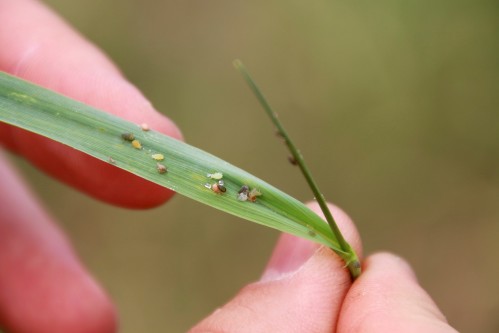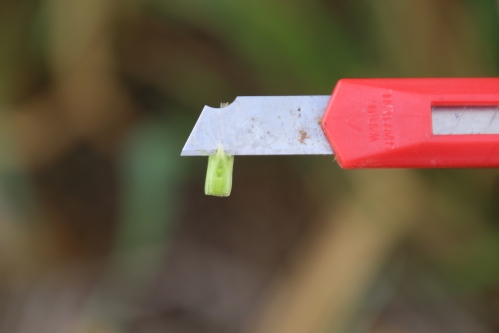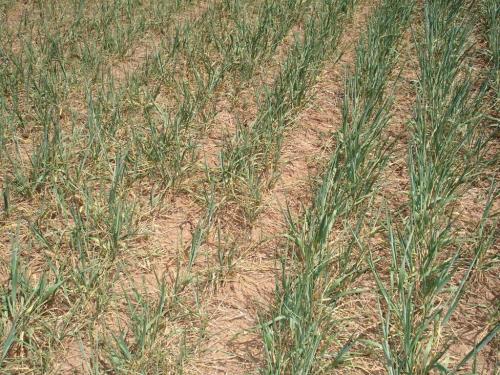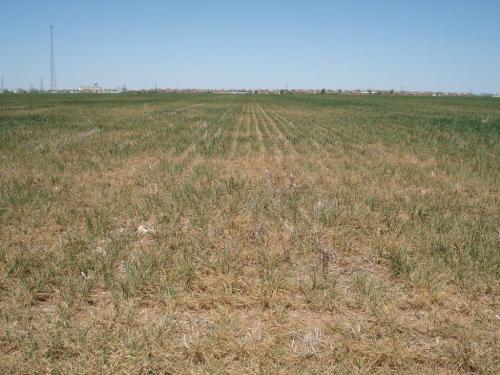Amanda de Oliveira Silva, Small Grains Extension Specialist
Dual-purpose producers were not able to plant wheat in timely fashion (mid-September) due to drought conditions in much of the state. Most of the wheat intended for dual-purpose was “dusted in” and emergence was delayed, but plants established well. Oklahoma received good rainfall in October, which helped the dual-purpose wheat to emerge and grow and enabled grain-only producers to plant in good soil moisture. Although dual-purpose wheat was planted later than desired, the October moisture enabled moderate fall forage production. Oklahoma has not received 0.25” of rainfall for almost two months in some parts of the state and the wheat is showing signs of drought stress. There are also several fields showing symptoms of nitrogen deficiency.
The last several weeks have been warmer than usual. December is on track to be one of the warmest on record. The issue with current temperature fluctuations and abnormally warm temperatures is that the wheat crop is not able to fully acclimate and “cold-harden” before the winter. On December 15, soil temperatures in OK ranged from 47 to 62 F and air temperature in one location changed by 13 degrees (from 67 to 80F) in a matter of hours.
Soil temperature at the crown level will influence wheat vernalization and tolerance to cold temperatures. Wheat needs soil temperatures at the crown level to be below about 50F to initiate the physiological process of cold acclimation. Once below this threshold, cooler temperatures generally mean more rapid acclimation.
If wheat is not well acclimated, severe drops in temperature could cause winterkill or injury, and a reduction in tillering and crop growth in the spring, but we won’t know for certain until later. In addition, dry soils can experience wider oscillation in temperature than moist soils, creating more crop risk if temperatures drop well below freezing before significant rainfall.
In all, the effect of this hot and dry weather on Oklahoma’s wheat crop will depend on several factors, especially how abrupt temperatures decrease and how much rainfall is received soon. Our crop is showing signs of drought stress and could benefit from additional moisture going into the winter.



























